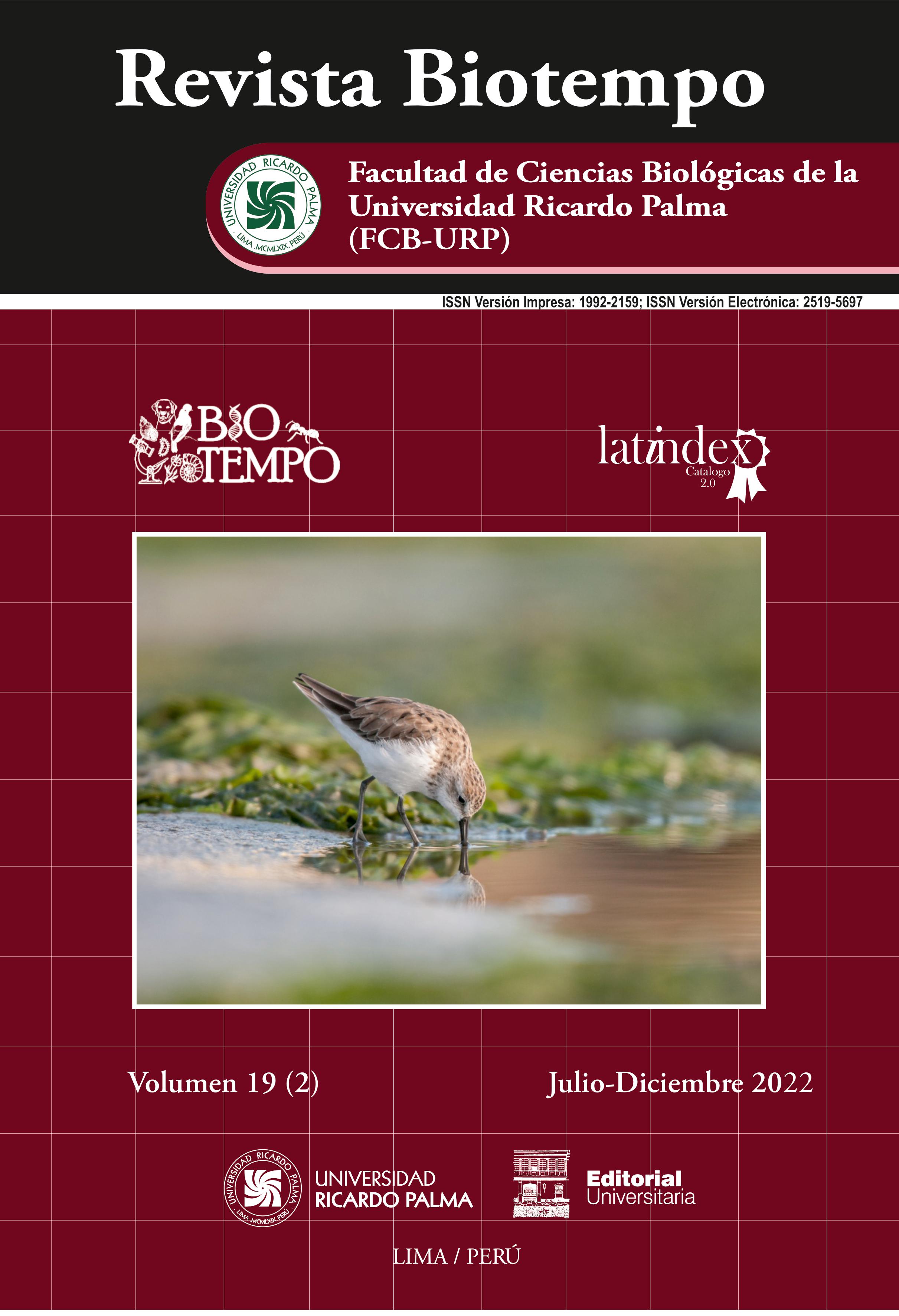BIODEGRADABILITY COEFFICIENT IN THE OXIDATION LAGOONS ANGOSTURA-LIMÓN AND YAURILLA, ICA-PERU
DOI:
https://doi.org/10.31381/biotempo.v19i2.5238Keywords:
biochemical oxygen demand, chemical oxygen demand, organic matter, pollution, wastewaterAbstract
The monitoring of the oxidation ponds is a verification activity on the efficiency of the environmental treatment. The aim of the study was to determine the biodegradability coefficient in the Angostura-Limón and Yaurilla oxidation lagoons, Ica-Peru. From April to May 2022, a sampling of the influents and effluents was carried out, determining the biochemical oxygen demand (BOD5,20 wastewater) and the chemical oxygen demand (COD). With the physical-chemical parameters, the relationship of the biodegradability quotient was established: CB = BOD5.20/ COD. In the Angostura-Limón oxidation pond, the concentrations in influents and effluents were: BOD5,20 = 315.0 and 308.1 mg·L-1; COD = 795.0 and 811.7 mg·L-1 while, in the Yaurilla oxidation lagoon they were: BOD5.20 = 268.8 and 303.6 mg·L-1; COD = 728.30 and 795.7 mg·L-1. The concentrations of BOD5,20 and COD exceeded the maximum permissible limit of Supreme Decree 004-2017 MINAM where values of 15 mg·L-1 and 40 mg·L-1 are established (D1: vegetable risk). Statistically significant differences were found in the BC values: 0.396 and 0.369 for both oxidation lagoons where a biodegradability condition was shown (0.25 - 1.50). It is concluded that there were concentrations of contamination from the effluents before the concentrations of organic matter in the wastewater for the oxidation lagoons, despite the biodegradability condition of the effluents.










